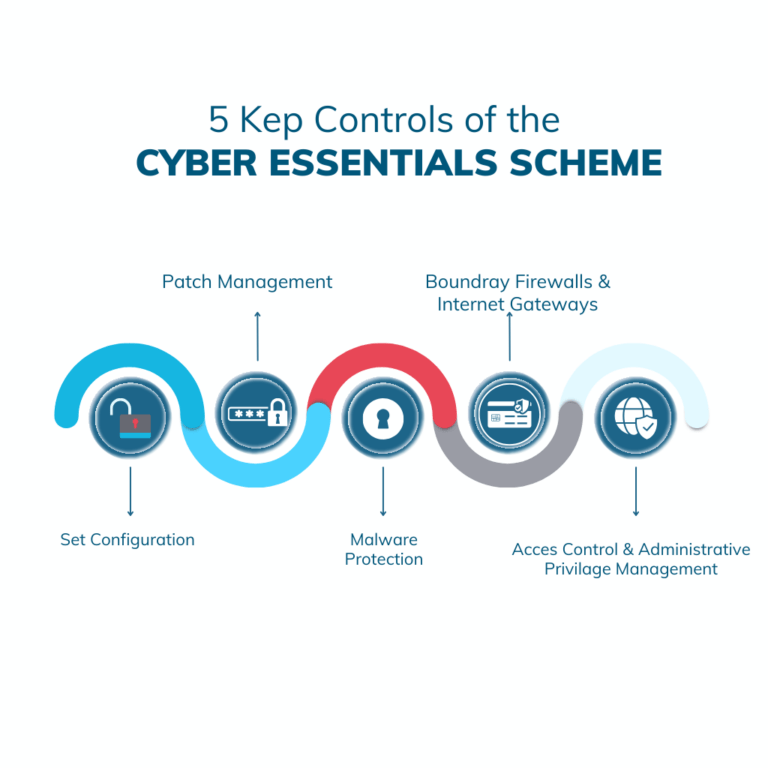A Comprehensive Guide to Safeguarding Your Business – Technologist
The relentless march of technology has transformed the business landscape, ushering in unparalleled convenience and efficiency. However, with these advantages come significant risks, particularly in the realm of cybersecurity.
From cyber-attacks and data breaches to natural disasters and systemic failures, these disruptions can derail a company’s trajectory, leading to substantial financial loss, erosion of customer trust, and, in extreme cases, the closure of the business. This article delves into why a well-conceived Disaster Recovery Plan (DRP) is not just a precaution but an indispensable component of a resilient business strategy.
This blog aslo explores the multifaceted world of cybersecurity, delving into crucial aspects such as cyber insurance, the importance of Cyber Essentials, and the indispensable role of Managed Service Providers (MSPs) in fortifying businesses against evolving cyber threats.
Understanding the Landscape:
Businesses are no strangers to the constant barrage of cyber threats, ranging from ransomware attacks to data breaches. These threats not only jeopardise sensitive data but also pose a severe risk to business continuity and erode the trust of customers and stakeholders. The importance of cybersecurity transcends mere technological concerns; it’s a comprehensive strategy that encompasses preventive measures, incident response plans, and ongoing employee education.
Picture a bustling marketplace, where businesses of all sizes thrive and grow. Yet, lurking in the shadows are cyber threats – the modern-day bandits. Ransomware, data breaches, and system failures are akin to storms and fires, unpredictable yet potentially devastating. This narrative highlights the need for a shield and a plan – the essence of cybersecurity and disaster recovery.
Want to know more about the evolving role of IT Support….
The Essence of a Disaster Recovery Plan:
A Disaster Recovery Plan (DRP) is more than a set of procedures; it’s a strategic framework designed to swiftly recover and safeguard a business’s IT infrastructure in the face of disruptions. Its objective is clear: to minimize operational, financial, and reputational damages and ensure a rapid return to normalcy.
We have created a Disaster Recovery Plan Checklist for you!
Download here!
The Strategic Benefits of a DRP:
- Rapid Recovery and Financial Protection: In business, time is money. A DRP facilitates a swift recovery from disruptions, drastically reducing costly downtime and safeguarding revenue streams.
- Reputation Management: The ability to quickly rebound from a disaster is pivotal in maintaining customer confidence and preserving your brand’s integrity.
- Continuous Business Operation: A robust DRP guarantees that key business operations can persist, even amidst a crisis, upholding service delivery and financial stability.
- Compliance and Legal Assurance: Many industries are governed by data protection and availability laws. A DRP helps businesses adhere to these regulations, averting legal repercussions and fines.
- Mitigation of Legal and Financial Liabilities: A DRP is a shield against potential lawsuits and financial liabilities arising from data breaches or system failures.
- Enhanced Market Confidence: A comprehensive DRP demonstrates foresight and reliability, qualities that attract customers and investors alike, giving the business a competitive edge.
- Employee Trust and Loyalty: A well-planned DRP fosters a sense of security among employees, knowing that their workplace is prepared for unforeseen challenges.
Implementing a Robust DRP:
- Leveraging Cloud-Based Solutions: Utilising cloud technology for disaster recovery offers scalability, security, and efficiency, ensuring data integrity and rapid recovery capabilities. Another value of cloud is the cost is exceptionally lower.
- Incorporating Advanced Backup Software: Regular, automated backups are the backbone of any DRP, safeguarding data against loss and facilitating quick restoration.
- Best Practice: Practice and learn your disaster recovery plan.
- Real-Time Data Replication: Implementing data replication ensures that the most current data is always available, reducing the risk of significant data loss.
- Adopting Disaster Recovery as a Service (DRaaS): DRaaS provides a comprehensive, outsourced solution for disaster recovery, offering expertise, resources, and continuous support.
The Role of Focus Technology Solutions in DRP Implementation:
- Risk Assessment and Customisation: Tailoring DRPs to address specific business vulnerabilities and requirements.
- Backup and Recovery Services: Providing diversified backup and recovery options to suit different business scales and needs.
- DRP Testing and Optimisation: Regularly evaluating and refining the DRP to ensure its effectiveness in real-world scenarios.
- 24/7 Monitoring and Assistance: Ensuring continuous oversight and support for IT infrastructure, enhancing disaster readiness.
- Regulatory Compliance Support: Assisting businesses in meeting sector-specific data security and recovery regulations.
- Resource Scale on Demand: We provide a vast amount of resources on demand whenever you need them. Do not underestimate the amount of resources needed.
Disaster recovery planning is not a luxury but a necessity in the digital business landscape. A comprehensive DRP isn’t just about managing risks; it’s a strategic tool for ensuring long-term business viability and success. By partnering with Focus Technology Solutions, businesses can develop, implement, and maintain an effective DRP, positioning themselves as resilient, reliable, and forward-thinking entities in the market.
The Crucial Role of Cyber Insurance:
In an age where cyber threats have become increasingly sophisticated and prevalent, businesses are turning to cyber insurance as a financial safety net. Cyber insurance is designed to mitigate the potentially crippling financial impact of a cyberattack or data breach. Here are some key aspects that highlight the critical role of cyber insurance:
- Financial Protection Against Cyber Losses: Cyber insurance supplies financial coverage for a variety of cyber-related incidents, including data breaches, ransomware attacks, and business interruptions. This protection extends to covering the costs associated with data recovery, legal fees, and even extortion payments in the case of ransomware.
- Risk Mitigation for Small and Medium-sized Enterprises (SMEs): SMEs, often lacking the resources for robust cybersecurity measures, find cyber insurance especially valuable. It offers them a level of protection that can be a crucial lifeline in case of a cyber incident, ensuring that the financial repercussions do not lead to the demise of the business.
- Incident Response Assistance: Many cyber insurance policies come with incident response services. This includes access to cybersecurity experts who can guide the organisation through the process of mitigating the incident, recovering data, and implementing preventive measures to avoid future occurrences.
- Reputation Management Support: Beyond financial losses, a cyber incident can tarnish a company’s reputation. Cyber insurance may cover the costs associated with public relations efforts to rebuild trust and keep a positive image in the aftermath of a data breach.
- Compliance Assistance: Some industries have stringent data protection regulations. Cyber insurance can help businesses navigate the complex landscape of compliance by covering costs associated with regulatory fines and penalties.
- Ensure you don’t Breach your Insurance: Breaching your insurance can make it void. If you do not explain to your insurance company that your company has been breached your insurance could be void.
In essence, cyber insurance is a proactive and strategic investment that not only protects against financial losses but also helps organisations navigate the complex aftermath of a cyber incident.
Learn More about Cyber Security here…
Embracing Cyber Essentials for Robust Cybersecurity:
The Cyber Essentials certification program, backed by the UK government, serves as a foundational framework for implementing essential cybersecurity measures. Here’s why businesses should actively embrace and pursue Cyber Essentials certification:
- Risk Mitigation: Cyber Essentials supplies a clear and achievable framework that helps businesses mitigate common cyber risks. By following its guidelines, organisations can significantly reduce their vulnerability to prevalent cyber threats, including malware, phishing, and other forms of cyberattacks.
- Enhanced Security Posture: Achieving Cyber Essentials certification is a testament to an organisation’s commitment to cybersecurity. It not only instils confidence in clients and partners but also enhances the overall security posture of the business. This is especially crucial in an era where cybersecurity is a fundamental aspect of trust in the digital space.
- Protection of Sensitive Data: The Cyber Essentials framework emphasises the protection of sensitive data, ensuring that businesses implement measures to secure customer information, financial data, and other critical assets. This not only safeguards the organisation but also fosters trust among stakeholders.
- Competitive Advantage: Cyber Essentials certification can supply a competitive edge in the market. Many clients and partners now consider cybersecurity practices as a key criterion when selecting business partners. Having Cyber Essentials certification shows a proactive approach to cybersecurity, giving businesses a distinct advantage.
- Adaptability to Evolving Threats: The Cyber Essentials framework is regularly updated to address emerging cyber threats. By staying current with the certification, organisations can adapt to the evolving threat landscape and ensure that their cybersecurity measures still are effective over time.
Cyber Essentials is more than just a certification; it is a strategic tool that equips businesses with the knowledge and practices necessary to fortify their defences against the ever-evolving landscape of cyber threats. Embracing these essentials is not only a commitment to cybersecurity but a proactive step towards building a resilient and secure digital foundation.

Disaster can strike any business, regardless of its size. From small startups to large corporations, the threat of events like cyber-attacks, natural disasters, or system failures is real and can have devastating consequences. This blog post emphasises the importance of a disaster recovery plan (DRP) for businesses of all sizes, highlighting how such a plan can be a lifeline in the face of unexpected disruptions.
Don’t wait for disaster to strike!
Download our free checklist now.
Download here!
The need for a robust disaster recovery plan transcends company size. Every business is at risk and must be prepared. Implementing a DRP is not just about safeguarding data and systems; it’s about ensuring the very survival and continuity of your business in the face of adversity. Whether you’re a small local shop or a multinational corporation, a comprehensive DRP is a critical component of your business strategy.
Don’t wait for disaster to strike. Take proactive steps today to develop and implement a disaster recovery plan that fits your business’s needs. Contact our experts for guidance and solutions tailored to protect your business, big or small.
Contact us now!
Related Posts

Report: Half of top 12 global exploits target IoT devices – Technologist

Guide to Choosing the Best Instagram Viewer Tool for Your Needs – Technologist

PodChats for FutureIoT: State of IoT Security – Technologist
About The Author
admin
Azeem Rajpoot, the author behind Technolo Gist, is a passionate tech enthusiast with a keen interest in exploring and sharing insights about the rapidly evolving world of technology. With a background in Technologist, Azeem brings a unique perspective to the blog, offering in-depth analyses, reviews, and thought-provoking articles. Committed to making technology accessible to all, Azeem strives to deliver content that not only keeps readers informed about the latest trends but also sparks curiosity and discussions. Follow Azeem on this exciting tech journey to stay updated and inspired.
